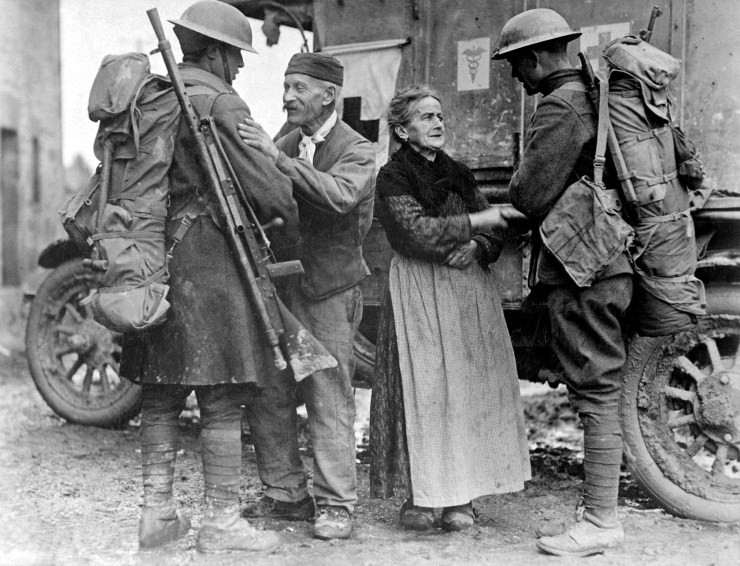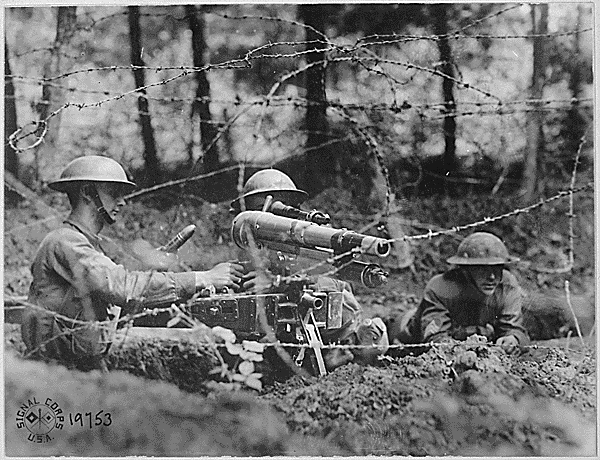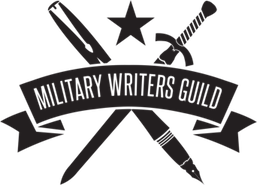France. What a silly place, am I right? They eat frogs, they’re on their, like, millionth government since the Revolution, and they keep needing us ‘Muricans to save them during world wars. Well, that is one way of viewing the Franco-American narrative, I suppose, if one were to overlook the incredibly vital French aid during the American Revolution (thousands of troops, a Navy, and literally tons of weapons) and all the French thinkers that influenced the Founding Fathers.
And then there’s that little problem of the U.S. Army using mainly French weapons when it entered World War I.
“But ASO, surely it was only a few weapons, right?” the interlocutor might ask. Sure, gentle reader, just a few weapons: just several hundred thousand automatic rifles, machine guns, grenades, artillery pieces, tanks, and airplanes. That’s all.
“But how could this happen?” the astonished reader asks.
Simple. It’s what happens when you build a small Army – less than 200,000 men – meant for fighting small wars on small islands and entirely neglect modernization.
On April 6, 1917, when the U.S. declared war on Imperial Germany, the U.S. Army had about 200,000 Soldiers on active service, approximately 80,000 of which were National Guardsmen called up for the 1916 Mexican Border Expedition. Getting the Army up to size wasn’t the problem; with authority of the National Defense Act of 1916, the President and Congress could call up the approximately 350,000 Soldiers in the National Guard and institute the draft. No, the problem was how to arm these Soldiers.
Once upon a time – back in the Spanish-American and Civil Wars – this wasn’t too big of an issue. Regular troops were augmented by units of U.S. Volunteers, most of whom were armed by their states or from stores of small arms kept by the Federal government in arsenals across the country. But that was back when war was relatively simple and you could equip infantry units with weapons like the muzzle-loading 1861 Springfield or the 1873 Springfield trapdoor rifle. With 1,000 men to a regiment, it was pretty simple to do the math: 1,000 rifles, some tents, a small wagon train, a blacksmith forge, and travelling kitchens would get you what you needed. Not so in 1917.
The first problem was force structure. The National Defense Act of 1916 had changed the organization of infantry regiments to reflect the changing nature of war: they now had machine guns and automatic rifles. Further, General John Pershing – Commander of the American Expeditionary Forces – added even more weapons to the list in 1917 to increase a regiment’s lethality: Stokes mortars, 37mm light field guns, and grenade launchers affixed to rifles. He also flexed infantry regiments up to a wopping 3,200 men, arranged in three battalions. The infantry regiment formed the core of Pershing’s main functional maneuver element: the division. Each division contained four infantry regiments, three field artillery regiments, three machine gun battalions, one regiment of engineers, and battalions of support troops. Each of these divisions contained 28,000 men. That was a lot of men to equip. Indeed, the first four divisions to arrive in France in the fall of 1917 -the 1st, 26th, 2nd, and 42nd – numbered over 112,000 men; this was over half the size of the Regular Army when war had been declared. There were simply too many men who needed arms and equipment.
The other problem was modernization. The Army was just not ready for the modern age. Their machine-gun was still the 1895 Browning, nicknamed the “potato digger” because its recoil drove it into the ground. The Army’s field guns were still of Spanish-American War vintage. The 1903 Field Gun was actually quite good, but had been stuck in the development stage for nearly two decades. The Browning Company had manufactured a new machine gun and automatic rifle, but there were barely any models of these excellent weapons on hand when war was declared, and it would take over a year for them to actually get pushed to France in any numbers that would matter. The service’s main rifle, the M1903 Springfield, was excellent, but was also lacking in numbers. Facing the daunting task of equipping the first four divisions to head to France, the War Department turned to its allies for help.
Thus it was that the French opened their stores of weaponry and began arming the Doughboys that were arriving in France by the thousands in the fall of 1917. To the regimental machine gun companies and the machine gun battalions went the M1914 Hotchkiss machine gun. The Hotchkiss was gas-actuated and air-cooled, firing an 8mm Lebel round and had to be crewed by three men, due to its weight and the need to incessantly feed 24-round strips of ammo into the gun. Its weight – 110 pounds with the tripod – caused it to usually be carried around on carts, adding to the difficulty of getting it into battle. However, U.S. machine gun battalions racked up excellent records using the Hotchkiss and even learned how to use them for laying down machine gun barrages.

Next came the much-maligned M1915 Chauchat automatic rifle. Now, the concept of automatic rifles was that there would be one auto rifle squad in each infantry platoon, giving that platoon the ability to lay down some serious suppressive fire. And it was a good concept that worked well. The Chauchat was a decent weapon that has come in for much ridicule after the war, mainly due to the issues with the variants retooled to use U.S. ammunition. These models were prone to jam. If well-maintained, the original 8mm weapon served effectively for both offensive and defensive purposes. In the hands of well-trained soldiers, the Chauchat could be a force multiplier.

Another infantry weapon adopted from the French was the Vivien and Bessières – or V-B in Doughboy parlance – rifle grenade. Fitting to the barrel of a rifle, the grenade was projected by the pressure from the bullet going off in the rifle’s chamber. V-B squads could deliver a barrage of deadly grenades on top of attackers or right before entering an enemy trench. There were, however, issues. The V-B was tooled for the French 8mm round, while the American rifles were 7.62mm. This difference sometimes caused the V-B not to go off because the 7.62mm rounds did not carry enough force. Still, the U.S. didn’t have any rifle grenades at the outbreak of war, so it was better than nothing.
While the Americans would get their primary field mortar from the British with the Stokes Mortar (a few lucky units got the British Lewis machine gun as well, which was very effective), they got their infantry support gun from the French: the Canon d’Infanterie de 37 modèle 1916 TRP, or simply, the 37mm gun. Doughboys, not quick to be wordy, called them “one pounders.” These small guns were crewed by two men and could be quickly moved around the battlefield to knock out machine gun nests or other medium targets. Some men used them as “sniping guns,” rolling them out into No-Man’s Land, firing off thirty-five rounds in a minute, then limbering up and getting the hell out before the Germans could respond with a murderous barrage. But the 37mm was still not a field gun.

Moving from the 37mm to field artillery, the two most striking French gifts to the Americans were the 75mm field piece and the 155mm field piece. The French 75 was possibly one of the most successful field guns of all time. It was deadly accurate and could keep up a high rate of fire due to the pneumatic firing device that absorbed the recoil of the gun and left the barrel sited after every shot. This alleviated the need to re-site the gun after a round was fired. U.S. troops got so proficient with the 75 that they could fire on the recoil, leading to such a high volume of fire that French advisers pulled out their hair in worry and German prisoners demanded to know where the American 75mm machine gun was. The gun even led to its own mixed drink being named for it, the French 75.
Less popular in alcoholic memory, but well-liked by the infantry who followed behind its powerful explosives was the 155mm Schneider howitzer. It provided the heavy type of barrage that Doughboys would need to break a German attack or take apart enemy entrenchments. It was a mix of old and new – pneumatic firing like the 75, but on a rickety gun carriage with wooden wheels that shook and rattled when the gun was fired. The U.S. purchased more than 1,300 of these for the American Expeditionary Force.
Along with the guns came the tanks. One tank in particular: the Renault FT-17. Since at the beginning of the war the U.S. wasn’t even thinking about tanks, they had to borrow the Renault from the French when it came time to think about a Tank Corps. The Renault was small – it could only fit two men: a driver and a commander/gunner. The commander communicated with the driver by kicking him in the head or shoulders, since the tank was so loud that the men couldn’t hear each other. And since the driver couldn’t see anything at all, this type of communication was vital. The U.S. would work on their own tank variant, with supervision by George Patton, but the war would end before it saw action. For more on the Renault, check out this War Stories Podcast.
During the war, the massive U.S. industrial machine would roll into action, turning out millions of small arms, thousands of field guns, and hundreds of tanks. But the fact remains that the first battles fought by U.S. troops in the fall of 1917 and the spring of 1918 were done so with mainly French weaponry, with some from the British. For the most part the equipment was good; but there is no doubt that fewer lives would have been lost had the U.S. fielded the Browning .30 caliber machine gun and Browning Automatic Rifle earlier in the conflict (although loss of life was more to do with poor American strategy and tactics than armaments). This shocking lack of readiness would be seen twenty-four years later, as the U.S. faced the Second World War. While the Army had a massive amount of equipment available, most of it was from the stocks of World War I – and therefore out-of-date. It would take another year and a half before the U.S. Army could begin to bring their weapons on the battlefield in parity against their enemy.
Both of these examples stand as a warning to the current U.S. Army: ignore modernization at your peril, and at the peril of thousands of lives of American service members. Because France can’t always be around to bail us out of trouble.
Enjoy what you just read? Please share on social media or email utilizing the buttons below.
About the Author: Angry Staff Officer is an Army engineer officer who is adrift in a sea of doctrine and staff operations and uses writing as a means to retain his sanity. He also collaborates on a podcast with Adin Dobkin entitled War Stories, which examines key moments in the history of warfare.




You are leaving out the role France had in equipping and training the US’s military aviation during WW1 – from the Lafayette Escadrille, to training, and finally equipping most of the US Air Corps in combat aircraft. Think Eddie Rickenbacker (top US ace of WW1) and Frank Luke (MoH), both flying French-made Spad fighter planes…
Kirk
USAF Ret
LikeLiked by 1 person
You are most entirely correct. The Army’s Air Service would not exist without these airframes and the vital training given to American aviators.
LikeLike
Thanks a lot for this exellent reminder – and for the rare, impressive videos . I posted a few similar (although not as extensive) historical notes some 12 years ago, when the “French-bashing” campaign was raging.
Just a small technical remark : the recoil of the French 75 was not exactly based on a “pneumatic” absorbing device, but on a piston moving back and forth in a long oil-filled tube (visible underneath the gun).
As for the Chauchat automatic rifle, the most polite word that it inspired to the poilus was the French equivalent of “crap”. It was in reaction against this technical failure that French engineers later designed the FM 24-27, one of the best infantty weapons developed between the wars.
Best wishes !
Fridomfry
LikeLike
Well crafted and thoughtful assessment. Some more details simply add flavor — many of the French weapons had been made in the USA under contracts that continued through to 1919 — contracts that in some cases precluded the transfer of production capability from French and British contracts to US Army contracts. Another issue plaguing US staff officers trying to form the eventually 3,000,000 soldier WWI Army was the issue of cross-Atlantic merchant vessels. In 1917 and 1918 the majority of trans-Atlantic steamers were British, and the British very carefully controlled what cargoes would be prioritized, usually allowing US troops passage, but holding back on those few US developed weapons that could have been shipped. Ditto cavalrymen and not their horses, for example.
The big push scheduled for 1919 would have been a different story.
LikeLiked by 1 person
Most, if not all, of the cavalry organizations were re-tasked into the additional machine gun and artillery battalions and regiments required for Pershing’s re-designed divisions. For Example the 1st NY Cavalry became the 105th and 106th Machine Gun Battalions.
Additionally, II Corps consisting of two divisions (27th and 30th) fought with the British in Flanders and not with the rest of the AEF. Interestingly, they were armed with British weapons in .303, many of which were actually produced in the US and Canada in 1916/17.
LikeLiked by 1 person
A number of the American FT-17 licensed clone, the M1917, while not seeing service in the first war would be sold onto Canada as “scrap” 20 years later. Delivered freshly overhauled and fully stocked, they would form the initial nucleus of the Canadian armour training program for the second world war. The P14 and P17 rifles mentioned by Josemoya would also find their way from the US to the UK where they were used to arm the Home Guard. The P14 in particular was sought after for its accuracy.
It is easy to criticize the French when one is ignorant of their history and the huge sacrifices they made in the first war.
LikeLiked by 1 person